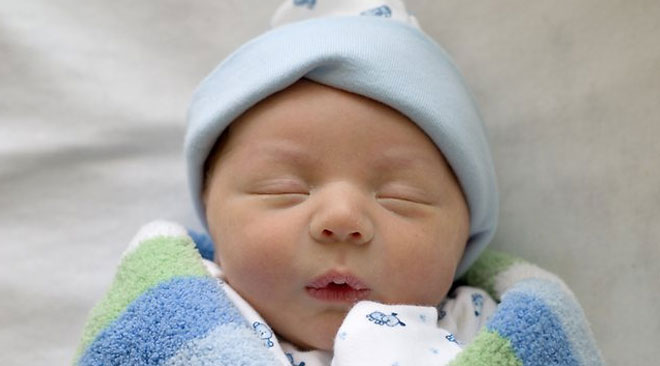
Devices that produce soothing sounds in order to lull infants to sleep can be loud enough at maximum volume to damage their hearing, researchers reported Monday.
Infant sleep machines emit white noise or nature sounds to drown out everyday disturbances to a baby’s sleep. The machines, sometimes embedded in cuddly stuffed animals, are popular gifts at baby showers and routinely recommended by parenting books and websites.
Some sleep experts advise parents to use these noisemakers all night, every night, to ensure the best rest for a newborn. Many parents say their babies become so used to the sounds of rainfall or birds that they will not nap without them.
Researchers at the University of Toronto evaluated 14 popular sleep machines at maximum volume and found they produced between 68.8 to 92.9 decibels at 30 centimeters, about the distance one might be placed from an infant’s head. Three exceeded 85 decibels, the workplace safety limit for adults on an eight-hour shift for accumulated exposure as determined by National Institute for Occupational Safety and Health. One machine was so loud that two hours of use would exceed workplace noise limits.
At 100 centimeters, all the machines tested were louder than the 50-decibel limit averaged over an hour set for hospital nurseries in 1999 by an expert panel concerned with improving newborn sleep and their speech intelligibility.
“These machines are capable of delivering noise that we think is unsafe for full-grown adults in mines,” said Dr. Blake Papsin, the senior author of the paper and the chief otolaryngologist at the Hospital for Sick Children in Toronto. The study was published in the journal Pediatrics. Dr. Papsin got the idea for this study after a parent brought a portable white noise machine to the hospital that sounded as roaring as a carwash.
“Unless parents are adequately warned of the danger, or the design of the machines by manufacturers is changed to be safer, then the potential for harm exists, and parents need to know about it,” said Dr. Gordon B. Hughes, the program director of clinical trials for the National Institute on Deafness and Other Communication Disorders, who was not involved in the study.
Safe use is possible, the study’s authors suggest. “Farther away is less dangerous, a lower volume is better and shorter durations of time, all things that deliver less sound pressure to the baby,” Dr. Papsin said.
Yet some models are designed to be affixed to the crib, like Homedics’ SoundSpa Glow Giraffe and Baby Einstein’s Sea Dreams Soother.
The findings are bound to surprise many parents.
After finding a recommendation for white noise in “Happiest Baby on the Block,” Naomi Tucker, 39, bought a machine so that her daughter, Chiara, 15 months, could fall asleep nightly to ocean waves. The device masks sirens and household noise in the family’s two-bedroom apartment in Los Angeles.
A fan outside her door is “an extra barrier of sound, so we don’t have to tiptoe,” said Ms. Tucker, a family therapist. For naps in the stroller or the car, she and her husband use a white noise app on an old cellphone.
“It’s surprising because I hadn’t thought of it, but I can see why that would be the case,” Ms. Tucker said of the study finding. Her daughter’s Graco device is set to maximum volume, but it is still not all that loud, she said. It is also five feet from the crib.
Dr. Marc Weissbluth, a pediatrician and author of “Healthy Sleep Habits, Happy Child,” said parents could still use the machines, with new precautions.
“If it’s too close or it’s too loud, this might not be healthy for your baby,” he said. But “a quiet machine that’s far away may cause no harm whatsoever.”
The study authors recommended that manufacturers limit the maximum noise level of infant sleep machines.
Source: New York Times





![smoking]](http://www.texilaconnect.com/wp-content/uploads/2014/03/smoking.jpg)





